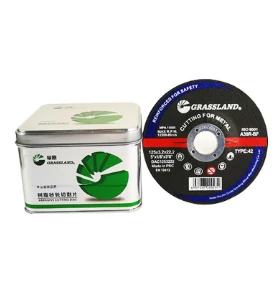

When selecting a cutting disc, several factors influence performance and longevity - Material Compatibility Ensure the disc material is conducive to the materials you frequently work with. For example, diamond discs are preferable for masonry projects, while abrasive discs are ideal for metal cutting. - Speed Rating Always check the RPM rating of the disc against the specifications of your cutting equipment. Using a disc with a lower speed rating than the tool can compromise disc integrity and safety. - Disc Thickness Thicker discs offer durability and stability for heavy-duty applications, while thinner discs enable precise, swift cutting suitable for lightweight tasks. Safety Considerations Amidst various options, maintaining safety during operation is crucial. Always inspect discs for damage before use, ensure correct mounting, and employ appropriate Personal Protective Equipment (PPE) such as goggles and gloves. Adhering to these safety protocols minimizes risks and enhances the lifespan of the discs. Conclusion Understanding the types of cutting discs and their specific applications empowers professionals to optimize their tool investments. By focusing on material compatibility, evaluating performance factors, and adhering to safety standards, selecting the ideal cutting disc becomes an informed decision, driving efficiency and productivity in your projects. Whether engaged in construction, manufacturing, or maintenance, leveraging the right cutting disc enriches both precision and performance, ensuring your work remains at the forefront of industry standards.
Post time:Jan - 16 - 2025
















